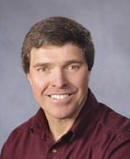 Aerobics is a term coined by Dr. Kenneth Cooper, who also founded the Cooper's Aerobic Center in Dallas, Texas. As it is usually applied, aerobics refers to activities that require sustained periods of large muscle movement such as walking, running, cycling, stepping, swimming, rowing or dancing. Continuous action sports such as basketball, soccer, tennis and handball also qualify as aerobic activities, as do recreational endeavors like hiking, mountain biking and skating.
Aerobics is a term coined by Dr. Kenneth Cooper, who also founded the Cooper's Aerobic Center in Dallas, Texas. As it is usually applied, aerobics refers to activities that require sustained periods of large muscle movement such as walking, running, cycling, stepping, swimming, rowing or dancing. Continuous action sports such as basketball, soccer, tennis and handball also qualify as aerobic activities, as do recreational endeavors like hiking, mountain biking and skating.
A newer addition to the list of aerobic activities includes a variety of water exercise programs. Often called water aerobics, these exercise sessions may take many forms, including shallow water or deep water, choreographed or non-choreographed, music or no music, implements or no implements, swimming activities or non-swimming activities, strength training components or no strength training components.
Actually, all movements in water require greater effort than movements on land, because water resistance is much greater than air resistance. To experience this difference first walk across the pool deck, then walk across the pool in waist deep water.
Water is an isokinetic medium that returns force for force in an almost matching manner. That is, if you give a light push against the water you will encounter a light resistance from the water, and if you give a heavy push against the waster you will encounter a heavy resistance from the water. To better understand this characteristic of water, try running across the pool in waist deep water. You will find much greater water resistance when running than walking, and it will take just about the same amount of time to reach the other side.
Another factor related to the isokinetic nature of water exercise is positive resistance in every direction of movement. On land, our muscles resist the force of gravity in both lifting and lowering actions. For example, when we lift a 20-poound weight in the dumbbell curl exercise, our biceps muscles work to overcome gravity. Likewise, when we lower a 20-pound weight in the dumbbell curl exercise, our biceps muscles work to attenuate gravity for a controlled return movement. In water, however, movements are essentially independent from gravity and require only one-way muscle force. In other words, when you stop pushing your hand against the water, the water stops resisting your hand. Unlike lifting weights against qravity, water doe not pull you back to the starting position.
While working out in water is definitely different than exercising on land, it can be a most beneficial and enjoyable training experience. In fact, the differences in performing water aerobics are at least partly responsible for its popularity. Consider how pleasant it can be to exercise in a cool environment that makes it almost impossible to overheat during your activity session. Add to this the variety of positions (vertical, horizontal, etc.) and unlimited movement pattern that can be performed in water, and you have a totally new exercise perspective.
I certainly appreciate the benefits associated with water aerobic, which include cardiovascular endurance, joint flexibility, muscular strength, and calorie utilization. However, my personal experience in this excellent aquatic activity is limited to that of an observer. For this reason, I have asked my fitness associate Tracy D'Arpino to present more specific information on water aerobic training programs. Tracy, my former student intern, has a B.S. degree in Exercise Science from Springfield College and is also a Licensed Physical Therapy Assistant. In addition to directing our Partnership Program for people with disabilities and teaching a variety of fitness programs, she also instructs innovative classes in water exercise.
A typical water exercise class is 45 minutes to one hour in length. A water aerobics class is designed for all abilities because the water acts as a medium allowing individuals to work as hard or easy as they want utilizing the resistance of the water. Class begins with a ten minute warm-up in chest deep water working the larger muscle groups of the legs and upper body. The workout phase consists of movements to raise heart rate by increasing intensity using both larger and quicker movements in both shallow and deep water. In the deep water we are able to do water running along with other activities allowing the trunk muscles to work as stabilizers. The cool-down phase is the last segment of the class consisting of strength exercises with water dumbbells, water walking, and stretching. Water aerobics can easily be modified for individuals following a rehabilitation program, and is a great way to reduce stress on the joints during productive and purposeful exercise.
Wayne L. Westcott, Ph.D., is fitness research director at the South
Shore YMCA in Quincy, MA., and author of several books including the new releases Building Strength and Stamina and Strength Training Past 50.
Tracy D'Arpino, B.S., PTA, is Director of the Partnership Program for people with disabilities and a water aerobics instructor at the South Shore YMCA.
©2001 Wayne L. Westcott, Ph.D. all rights reserved